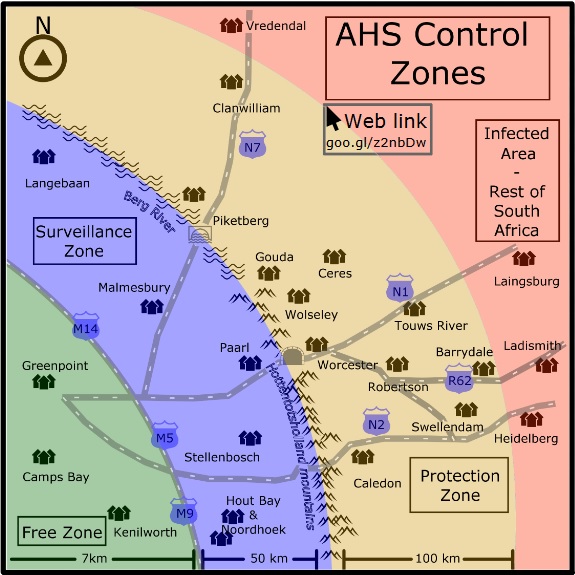As an African country, we are subject to African Horse Sickness (AHS). This potentially fatal disease is spread through midges and the monitoring and management of this disease it of utmost importance.
Therefore, we need to monitor all horses that enter into a higher level of control. To make this easier on you, ERASA, together with myhorse.org.za, has compiled an easy-to-use file that shows you exactly what to do.
Click here to see the different zones
We have updated the movement application form in an attempt to try and make it easier for the vet. The idea is that the form is completed and sent to us an absolute minimum of 7 days ahead of a movement (or ride for example), and the client then keeps the form and gets the vet to complete the relevant section for the prenote. In the event of a ride, the client should bring this with them to the ride, put it in the passport and then when the vet signs the passport he just skims the details and checks they are the same as the passport, then keeps the application to send to us after the ride (on the Monday or as soon as possible).
In plain English:
If you are in the protection zone and want to move into the surveillance zone you need to have a valid passport for your horse, identified by a vet and up-to-date AHS vaccinations. The vaccinations need to be done more than 40 days before traveling over the border and less than 24 months since the last vaccination, and need to be performed and signed by a vet.
If you are moving your horse from the infected area to an AHS higher control zone, the horse needs to have a valid passport approved by State Vet Boland for movement purposes of which the identification of the passport has been done by a vet, with up-to-date AHS vaccinations. The vaccinations need to be done more than 40 days before traveling over the border and less than 24 months since the last vaccination, and need to be performed and signed by a vet.
The Sate Vet Permit will confirm that there are no AHS cases at origin.
